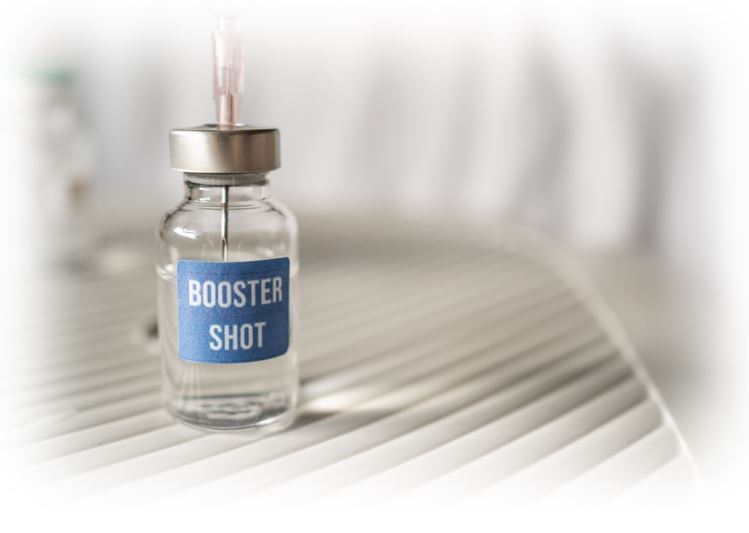- Clinical Technology
- Adult Immunization
- Hepatology
- Pediatric Immunization
- Screening
- Psychiatry
- Allergy
- Women's Health
- Cardiology
- Pediatrics
- Dermatology
- Endocrinology
- Pain Management
- Gastroenterology
- Infectious Disease
- Obesity Medicine
- Rheumatology
- Nephrology
- Neurology
- Pulmonology
CDC Real-world Studies Show Bivalent Boosters Protect Against Severe COVID-19 Disease
Bivalent COVID-19 booster vaccinations may reduce the risk of hospitalization and emergency department (ED) visits by at least 50% according to data from 2 real-world studies released today by the Centers for Disease Control and Prevention (CDC) and published in Morbidity and Mortality Weekly Report.

The first study included more than 93 000 adults in 9 states who had either been hospitalized (15 500) or had an ED or urgent care encounter (78 000) for a COVID-like illness. Vaccine effectiveness was evaluated between September 13 and November 18, 2022, when the Omicron BA.5 variant was the predominate sublineage in circulation and additional variants also emerged.
The researchers found that having received a bivalent mRNA vaccine reduced the risk of “medically attended” COVID-19 compared with no vaccination or previous vaccination with a monovalent formulation. They observed that protection against requiring medical intervention increased with time since receipt of the last monovalent shot.
ED/urgent care. Specifically, the vaccine effectiveness of a bivalent booster dose received after 2, 3, or 4 monovalent doses against ED/urgent care encounters for COVID-19–associated illness was 56% compared with no vaccination, 31% compared with a monovalent dose received 2–4 months earlier, and 50% compared with receipt of last monovalent dose ≥11 months earlier.
Hospitalization. Bivalent booster dose effectiveness against hospitalization for COVID-19–associated illness, again after receipt of 2, 3, or 4 monovalent doses, was 57% compared with no vaccination, and 45% compared with receipt of last monovalent doses ≥11 months earlier.
Additional analysis found booster vaccine effectiveness was higher in adults aged ≥65 years, a population at high risk for severe COVID-19-related illness, compared with those aged ≥18 years
Previous real-world analyses from the CDC suggested that bivalent boosters provide a modest degree of protection against symptomatic infection among adults compared with receipt of 2, 3, or 4 doses of monovalent vaccines only.
“With co-circulation of multiple respiratory viruses, including SARS-CoV-2, influenza, and respiratory syncytial virus (RSV), vaccination against respiratory diseases for which vaccines are available is especially important to prevent illnesses resulting in health care encounters and to reduce strain on the health care system,” the authors wrote.
The second study was of 798 immunocompetent adults aged ≥65 years admitted for COVID-19-like illness to 22 hospitals in 18 US states also between between September and November 2022. The median interval between receipt of a bivalent booster dose and index illness was 29 days, according to the study.
When compared with unvaccinated patients, the vaccine effectiveness of a dose of bivalent mRNA vaccine in preventing COVID-19-associated hospitalization was 84%. Booster vaccine effectiveness was 73% when compared with patients who had received ≥2 monovalent-only mRNA vaccine doses ≥2 months before illness onset. Further, relative vaccine effectiveness of a bivalent booster dose was 78% and 83% when researchers compared this group with patients whose last monovalent dose was 6 to 11 months and ≥12 months before illness onset, respectively.
Respiratory virus season redux
As the CDC continues to report the most alarming influenza statistics in a decade and COVID-19 cases have climbed 45% in the past 2 weeks, respiratory virus vaccinations are not keeping pace. Uptake of the bivalent COVID-19 booster is still quite low, even among the most vulnerable populations. The CDC estimates that approximately 16% of adults aged ≥18 years and just over one-third (36%) of those aged ≥65 years have received the updated shot.
“Booster fatigue” is real, said Sandra Fryhofer, MD, chair of the American Medical Association Board of Trustees said during a recent news media call, but so is the threat of severe illness this year. She emphasized getting a flu and COVID vaccine at the same time and urged the public to do it soon, pointing out that it can take up to 2 weeks for protective antibodies to develop.
The US Food and Drug Administration announced today plans for a meeting on January 6, 2023 of the Vaccines and Related Biological Products Advisory Committee to discuss potential modifications to the composition of primary doses of the COVID-19 vaccines and whether and how the composition and schedule for boosters should be adjusted moving forward. Representatives from the CDC and National Institutes of Health will also participate in the discussion.
